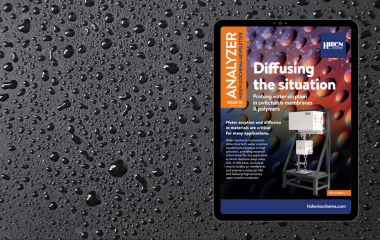Harnessing Hiden Isochema Instruments in Carbon Capture Research
In the quest to mitigate climate change, carbon capture technology emerges as a critical tool. This innovative approach involves capturing carbon dioxide (CO2) emissions from sources like power plants before they enter the atmosphere and then storing them or reusing them in various applications. One of the key challenges in optimizing carbon capture processes is understanding how materials interact with CO2 under different conditions. This is where Hiden Isochema instruments come into play, offering precise and detailed analysis critical for advancing carbon capture research.
Hiden Isochema instruments are sophisticated analytical tools designed to measure the adsorption and desorption of gases and vapors by materials. These instruments play a pivotal role in carbon capture research by providing accurate data on how potential carbon capture materials, such as metal-organic frameworks (MOFs), zeolites, or activated carbons, interact with CO2. This data is crucial for selecting the most efficient materials for capturing carbon dioxide from the atmosphere or industrial emissions.

The Role of Hiden Isochema Instruments in Carbon Capture
Material Screening and Optimization: Hiden Isochema instruments allow researchers to screen a wide range of materials to identify those with the highest CO2 adsorption capacities. By analyzing how different materials adsorb CO2 at various pressures and temperatures, researchers can select and optimize materials that are most effective for carbon capture under specific conditions.
Understanding Kinetics: Carbon capture is not just about how much CO2 a material can adsorb; it’s also about how quickly it can do so. Hiden Isochema instruments help in studying the kinetics of CO2 adsorption and desorption, enabling the development of materials that not only capture more CO2 but also do it more rapidly, increasing the efficiency of the carbon capture process.
Thermodynamic Analysis: Understanding the thermodynamics of CO2 interaction with materials is essential for designing effective carbon capture systems. Hiden Isochema instruments provide valuable data on the isotherms and isobars of CO2 adsorption, which helps in understanding the energy requirements of the capture process and in designing systems that are both effective and energy-efficient.
Durability and Regeneration Studies: For carbon capture materials to be practical, they must be durable and easily regenerable. Hiden Isochema instruments can be used to study the long-term stability of materials and their capacity to be regenerated after CO2 adsorption. This ensures the development of sustainable carbon capture solutions that can be used repeatedly without significant loss of performance.
As the world seeks sustainable solutions to combat climate change, carbon capture technology stands out for its potential to significantly reduce CO2 emissions. Hiden Isochema instruments are at the forefront of this research, providing the detailed analysis necessary for developing effective and efficient carbon capture materials. By enabling precise measurement of material interactions with CO2, these instruments help in optimizing carbon capture processes, making them more viable for widespread use. As research progresses, the insights gained from using Hiden Isochema instruments will undoubtedly play a crucial role in advancing carbon capture technologies, contributing to our global efforts to create a cleaner, more sustainable future.



